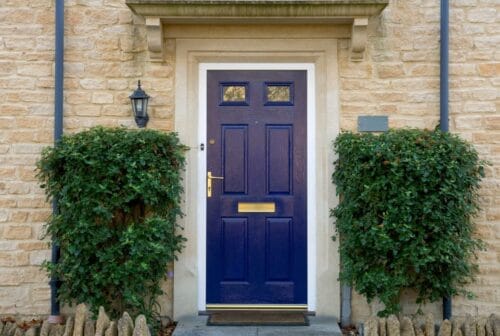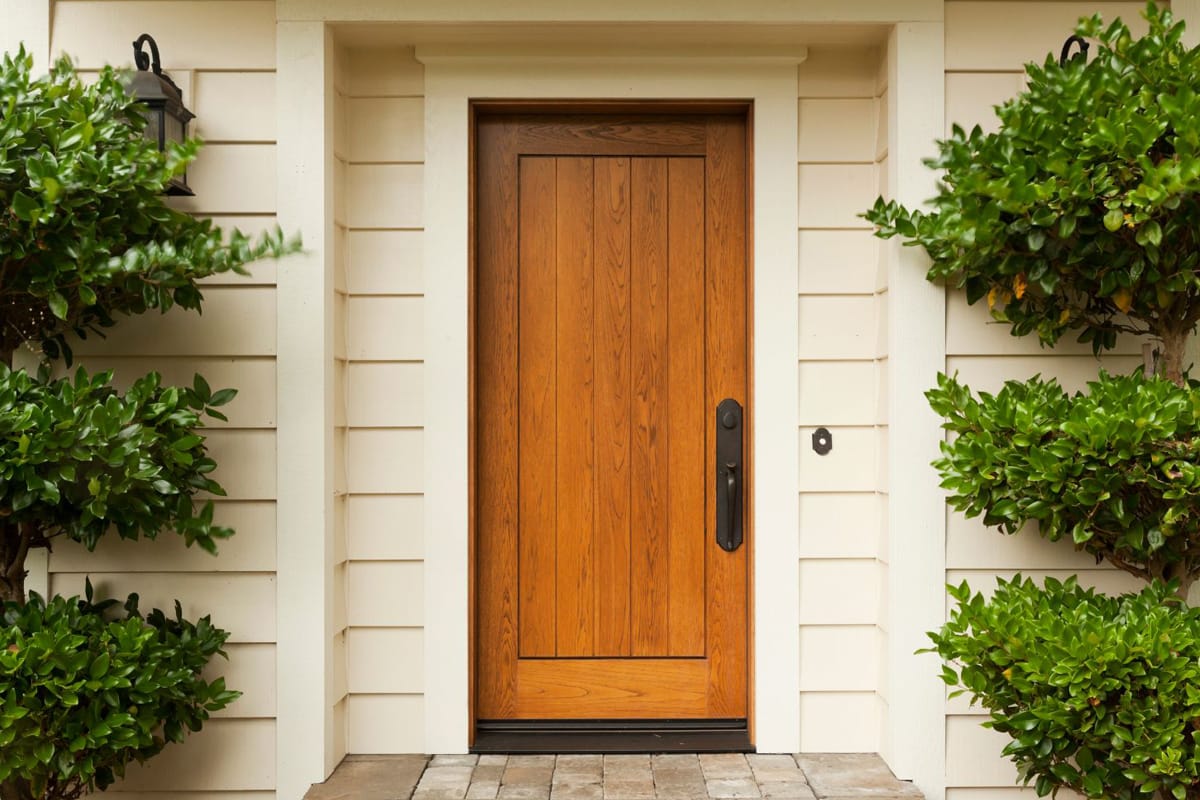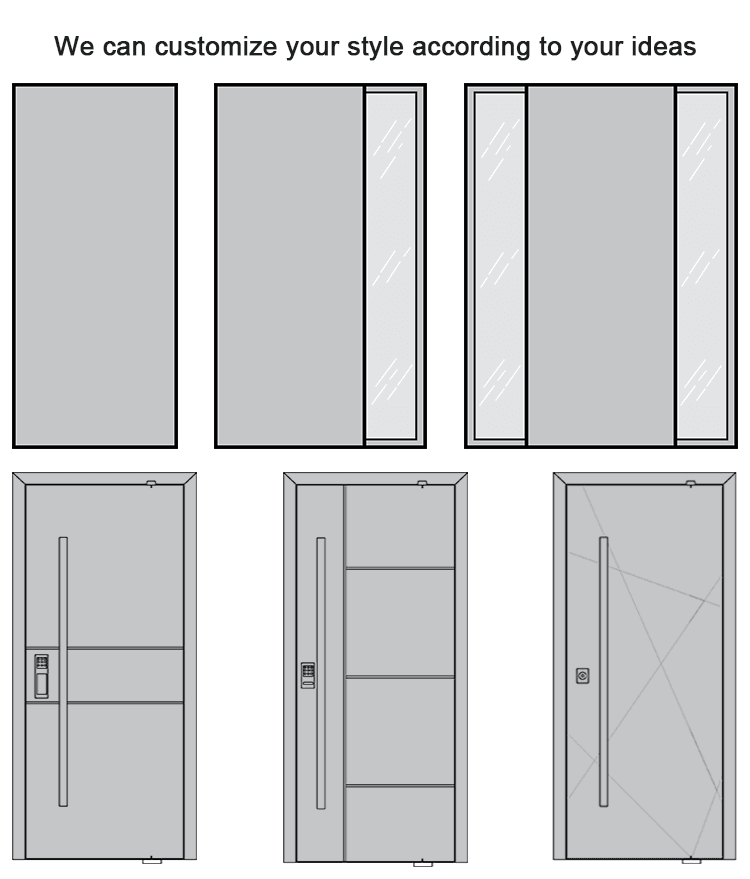If you want to refresh your home’s appearance, updating your front door is one of the easiest and most effective ways. Whether you replace it or repaint it, a new front door color can make a lasting impression and set the tone for your entire home.
A well-chosen front door color not only enhances your home’s curb appeal but also reflects your personal style. Additionally, it can increase your home’s perceived value.
Choosing the right front door color can seem overwhelming given the many options available. This guide outlines key considerations, provides practical tips, and helps you select a color you will enjoy for years to come.

Why Your Front Door Color Truly Matters
So, why put so much thought into one little door?
- Boosting Curb Appeal: A fresh coat of paint in the right color makes your home stand out and creates a strong first impression.
- Setting the Tone: The color you choose communicates your home’s character and welcomes guests.
- Expressing Your Style: The front door offers an opportunity to showcase your personal taste and make your home unique.
This is a relatively inexpensive upgrade that can have a significant impact.
Foundational Factors: How Your Home Guides Your Choice
Your home isn’t just a backdrop; it plays a big role in helping you pick the perfect door color.
Architectural Style is a Key Clue
Your home’s architectural style is a major factor in your color selection.
- Traditional homes often look best with classic, rich colors like navy blue, deep red, or forest green. These shades work beautifully with materials such as brick, stone, or wood.
- Modern homes can feature bold colors or sleek, monochromatic shades, such as bright yellow, cool aqua, or sophisticated black.
- Cottage or Craftsman homes tend to pair well with earthy tones or pastels. Natural wood stains or dark brown are also a sure-fire match for the handcrafted look of traditional or craftsman styles.
- For Bungalow homes, warm yellows, calming light blues, or cheerful reds enhance that cozy, inviting feeling.
- On Ranch homes, a bold vertical color like cobalt blue or fire engine red can add visual interest and break up those horizontal lines.
Home style is an important reference point. If you have not found the right front door, consider contacting a reliable front door manufacturer. As a leading exterior door manufacturer, Grandsea offers a wide range of styles and materials for every need.

Work With Your Home’s Existing Palette
Your front door color should coordinate with the existing colors of your home.
- Coordinate with Siding, Trim, and Roof: Look at your siding, trim, and roof colors. The door color should complement these existing elements.
- Matching vs. Contrasting: Decide whether you want your door to blend in for a cohesive look or stand out as a focal point.
- The Color Wheel is Your Friend: This handy tool shows how colors relate to each other. To use it, find your house color, then look across the wheel for a complementary color (like blue and orange) for maximum contrast and drama. If you prefer something more subtle, look at colors next to your house color on the wheel (analogous colors, like blue and green).
- Do not overlook the trim. The color of the trim around your door is important for the overall appearance. White trim is classic, while a contrasting trim can further highlight a colorful door.
Take Cues from Your Surroundings
Nature and your neighbourhood can offer plenty of inspiration.
- Look at your landscape: Pick up colors from the plants, surrounding trees, or even the sky. Using natural colors can help your home feel like it belongs in its setting.
- Think about your neighbourhood: While you don’t have to conform, be aware of the colors on nearby homes. Sometimes fitting in is nice, and sometimes standing out feels right.
- Also, consider the local climate, surrounding foliage, and how lighting changes throughout the day and seasons, as these factors can affect how colors appear.

Home Size and Alignment Matter Too
The size of your home and its position can influence your choice.
- Large homes can often handle brighter, bolder colors to draw attention to the entryway.
- For small homes, complementary color palettes that integrate the door with the trim and siding can make the house look larger. A bright door might stand out more, so some prefer integrated palettes.
- If your home is set back from the street, a brighter door color might be good as it will appear less bold from a distance. A home closer to the street might prefer a less striking color for privacy reasons.
Color Psychology
The color of your front door can influence how people perceive your home and the mood it conveys.
Here’s what some popular colors often convey:
- Red: Energy, Passion, Excitement, Strength, Love, Daring, Stimulation.
- Yellow: Cheerful, Welcoming, Happiness, Optimism, Sincerity, creativity, competence.
- Blue: Calm, Trustworthy, Security, Sophistication, authority, trust, relaxation.
- Green: Natural, Balanced, Harmony, Hope, Serenity, health, calm, tenderness.
- Orange: Fun, Warmth, Excitement, abundance, comfort, extraversion.
- Purple: Authority, Power, Tranquility, authenticity, cheeriness.
- Pink: Hope, Sincerity, Charm, cheerfulness, softness.
- Brown: Ruggedness, Nature, Security, Reliability, grounding, warmth.
- Black: Sophistication, Power, Authority, Versatile, Classic, luxury.
Thinking about the mood you want to set can really help narrow down your options.
Choosing the Right Paint for Your Front Door
Selecting the color is just the first step. Here are some practical tips to consider before making your final choice:
- Always Sample First: Seriously, don’t skip this! Paint swatches directly onto your door (or a board placed in the doorway).
- Observe in Different Light: Colors can appear very different throughout the day. Check your samples in morning sunlight, midday, and evening shade.
- Choose the Right Paint and Finish:
- Exterior Grade is a Must: Your door faces the elements, so you need paint that can handle it! Look for high-quality exterior-grade paints that resist peeling, grime, and fading. UV resistance is important to prevent fading, and some paints offer mildew resistance if you live in a rainy or humid area.
- Paint Type by Material: The type of door affects the paint you need. Water-based latex is generally best for most wood and fiberglass doors, while oil-based enamel works well for metal doors to prevent rust. Make sure to use a corresponding primer.
- Sheen/Finish Matters: The finish affects both the look and durability. Gloss or semi-gloss finishes are often recommended because they’re harder-wearing and reflect light. A high gloss can also complement elements like decorative glass. Lower sheens like flat or matte can hide imperfections but may dull the color slightly.
- Consider painting your screen or storm door frame the same color as your front door for a cohesive appearance.
- Consider the Door’s Physical Characteristics: The material’s texture (like wood grain) or the door’s design (panels, windows) can influence the best color and finish choice.

How to paint a front door: A Quick Guide
Painting your front door is a manageable DIY project that can save money compared to hiring a professional. The process typically takes about a day.
- Gather Your Tools: You’ll need things like drop cloths, painter’s tape, sandpaper, cleaner, primer, your chosen paint, brushes, a roller, paint tray, screwdriver, and rags.
- Preparation is Key: First, remove all the hardware (doorknob, lockset, etc.) and protect the surrounding area with drop cloths and painter’s tape. Clean the door thoroughly to remove dirt and grime. Lightly sand the door to smooth imperfections and help the paint stick, then wipe away the dust.
- Priming: Apply an exterior-grade primer suited for your door’s material. Use a brush for detailed spots and a roller for flat areas. Let it dry according to the can’s instructions.
- Painting Technique: Stir your paint well. Use a brush for the edges and detailed sections, and a roller for the larger, flat parts. Apply thin, even coats, letting each one dry completely. You’ll likely need two to three coats.
- Painting the Edges: If your interior door color is different from the exterior, paint the hinge edge to match the exterior color and the latch edge to match the interior color.
- Curing: This is important! Let the paint cure fully according to the paint can instructions before putting the hardware back on.
You’ll probably only need about one quart of paint for an average-sized door.
Maintaining Your Beautiful Front Door
Once your door looks fabulous, a little maintenance will keep it that way.
Regularly clean your door to maintain its color, keep extra paint for touch-ups, and consider applying a clear protective finish for added durability.
Choosing high-quality, durable exterior paint from the start helps reduce the need for frequent touch-ups. Some exterior paints are specially formulated to withstand harsh weather conditions like rain and humidity.

Conclusion: Your Perfect Welcome Awaits
The right front door is more than just an entrance; it’s a statement, a welcome, and an opportunity to express yourself. You can even contact Grandsea’s door and window experts directly. As experienced manufacturers, they have numerous examples of front door renovations.
With careful consideration, you can select a front door color that will make you feel happy and welcomed every time you return home.


